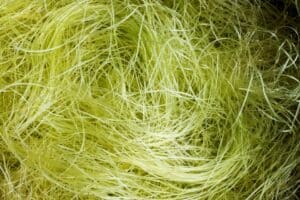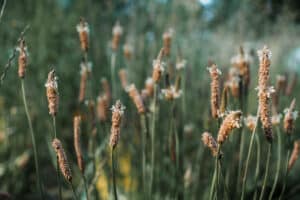Step into the enchanting world of Lady’s Mantle, fondly known as the little alchemist. This captivating plant enthralls herbal enthusiasts and alchemists alike because of its profound connection with the Water Element.
Lady’s Mantle’s alchemical correspondences are seen through its cup-shaped leaves that collect dew, and its balancing effects on dampness and lax tissues. Lady’s Mantle harmonizes with the water Element, thereby nurturing and revitalizing all systems in the body governed by it.
In today’s plant profile, you’ll discover:
- How Lady’s Mantle’s astringent taste results in tonifying varicose veins, organ prolapse, and excessive sweating
- The relationship between its cup-shaped leaves and the womb
- Lady’s Mantle’s tonic effects on female reproductive health and its connection to Venus
- How Lady’s Mantle assumes a vital role in establishing balance within the Water Element in the body
- The intriguing way alchemists used the dew collected from Lady’s Mantle
Table of Contents
“The generic name Alchemilla is derived from the Arabic word, Alkemelych (alchemy), and was bestowed on it, according to some old writers, because of the wonder-working powers of the plant. Others held that the alchemical virtues lay in the subtle influence the foliage imparted to the dewdrops that lay in its furrowed leaves and in the little cup formed by its joined stipules, these dewdrops constituting part of many mystic potions.”
~ Grieve Modern Herbal, 1940
Sometimes you can find the essence of a plant in its name, and I can’t think of a better example than Lady’s Mantle.
The Latin name of this herb is Alchemilla vulgaris, which translates to “the little alchemist.” Needless to say, Lady’s Mantle is a treasured herb in the alchemical herbal tradition because of its unique relationship to the Water Element.
If you look at the leaves of Lady’s Mantle, you’ll notice that they’re cup-shaped. Overnight, dew gathers in them, which you can collect in the morning and use in various alchemical works. In alchemy, dew is a sacred water, said to hold the power of Celestial Fire. Because the water remains held by the leaf and unmarred by impurities, it’s considered purified and distilled–another reflection of the spagyric-formulation process.
Lastly, if you’ve ever worked with tarot, then you’re likely familiar with the significance of the cup shape. The cup is a symbol that’s associated with the Water Element in spiritual traditions around the world, and the shape of Lady’s Mantle’s leaves alludes to its relationship with this Element.
I personally love the Latin name for this plant and feel a strong connection with Lady’s Mantle because I’m so steeped in Western alchemical traditions and spagyric herbal pharmacy. With its rich history and symbolism, Lady’s Mantle serves as a beautiful reminder of the profound wisdom and transformative power that can be found in the natural world around us.
Common name: Lady’s Mantle
Latin name: (Alchemilla vulgaris)
Family: Rosaceae
Part Used: Leaf
Tastes: Astringent
Affinities: Female Reproductive System, Venous Circulation, Digestive System
Actions: Astringent, Vulnerary
Energetics: Cooling, Drying, Tonifying
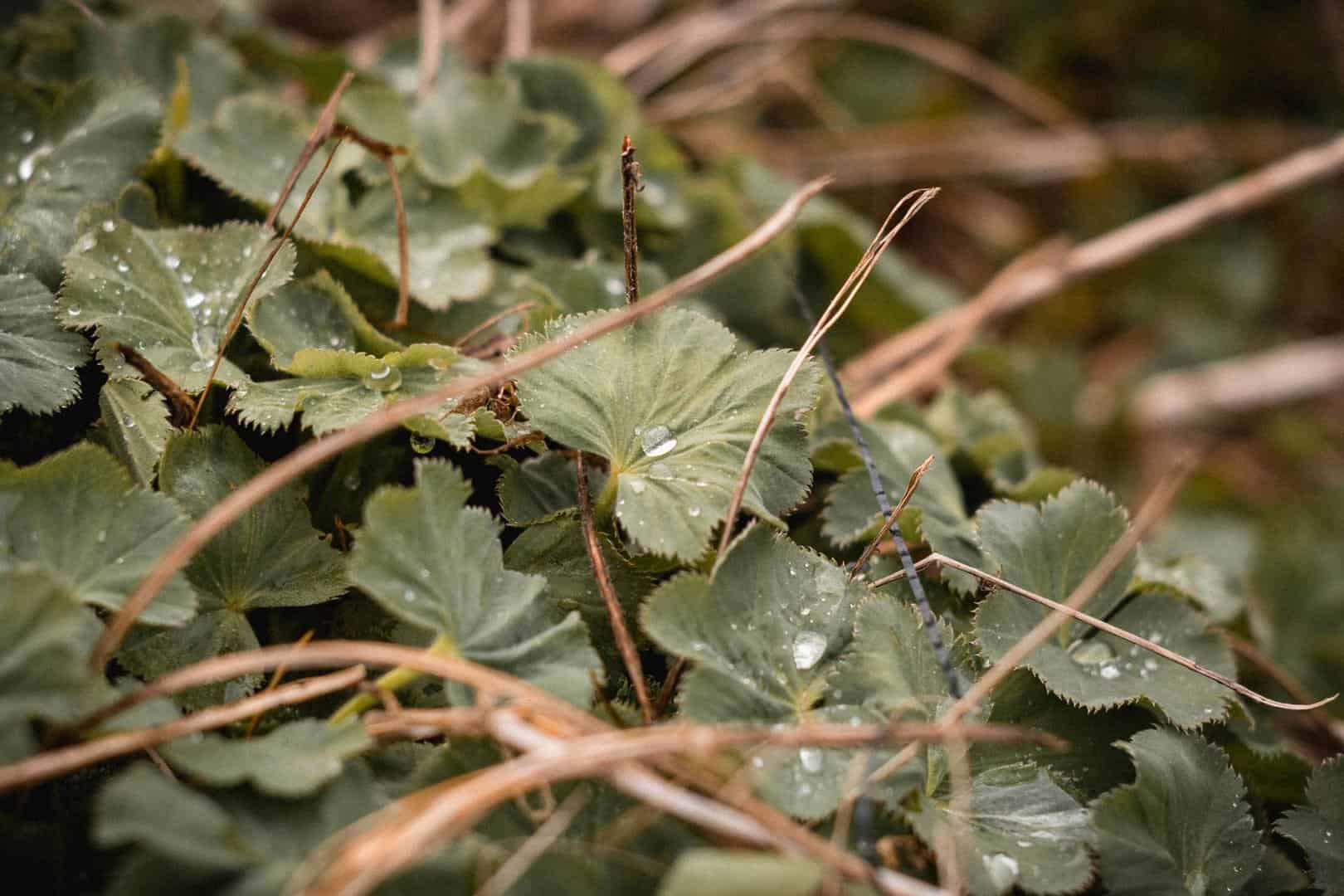
Taste
Lady’s Mantle is an astringent-tasting plant, a property it shares with many of its Rosaceae family relatives. The astringent taste indicates the presence of tannins, which are constituents that knit proteins together to tighten and tone the tissues. Traditionally tannin-rich plants were used to tan hides, hence the name tannins. Plants high in tannins, like Lady’s Mantle, have the same tonifying and tightening effects on overly relaxed tissues in the body. Through its astringency, Lady’s Mantle restores function and form to atonic tissues and organs.
Affinities
In the intricate system of blood circulation, there is a fascinating aspect that deserves attention—venous circulation. Unlike the arteries, which actively expand and contract to assist blood flow away from the heart, the veins play a more relaxed role in returning blood to the heart. Because they don’t expand and contract, veins must defy gravity and navigate a relatively rigid channel to bring blood back up to the heart.
Because of the passive nature of venous circulation, blood tends to stagnate more easily within the veins. As venous circulation becomes overly relaxed and dilated, varicose veins, spider veins, and overall poor venous circulation can develop. These conditions are often observed in individuals with pale skin and visible veins. William LeSassier, considered by many one of the great herbal geniuses of the 20th century, specifically recommends Lady’s Mantle for sensitive women with pale skin and prominent, highly visible veins.
Another strong affinity of Lady’s Mantle is the female anatomical reproductive system–more specifically, the uterus. Uterine prolapse can occur post-childbirth when the tissues have become excessively stretched, lose their tone, and become weak and atonic. By tightening, binding, and contracting the uterus, Lady’s Mantle restores tone to this organ. Another main way Lady’s Mantle is used for the female reproductive system is in the treatment of vaginal discharge, known as leukorrhea.
In the digestive system, Lady’s Mantle is indicated anytime there’s a pattern of laxity in the intestinal tract, such as with a hyperpermeable intestinal membrane (also known as leaky gut). It’s also beneficial for hernia, which can develop because of laxity in the connective tissue. With its astringent property, Lady’s Mantle tightens and tonifies the connective tissue to prevent relapses and assist in its readjustment.
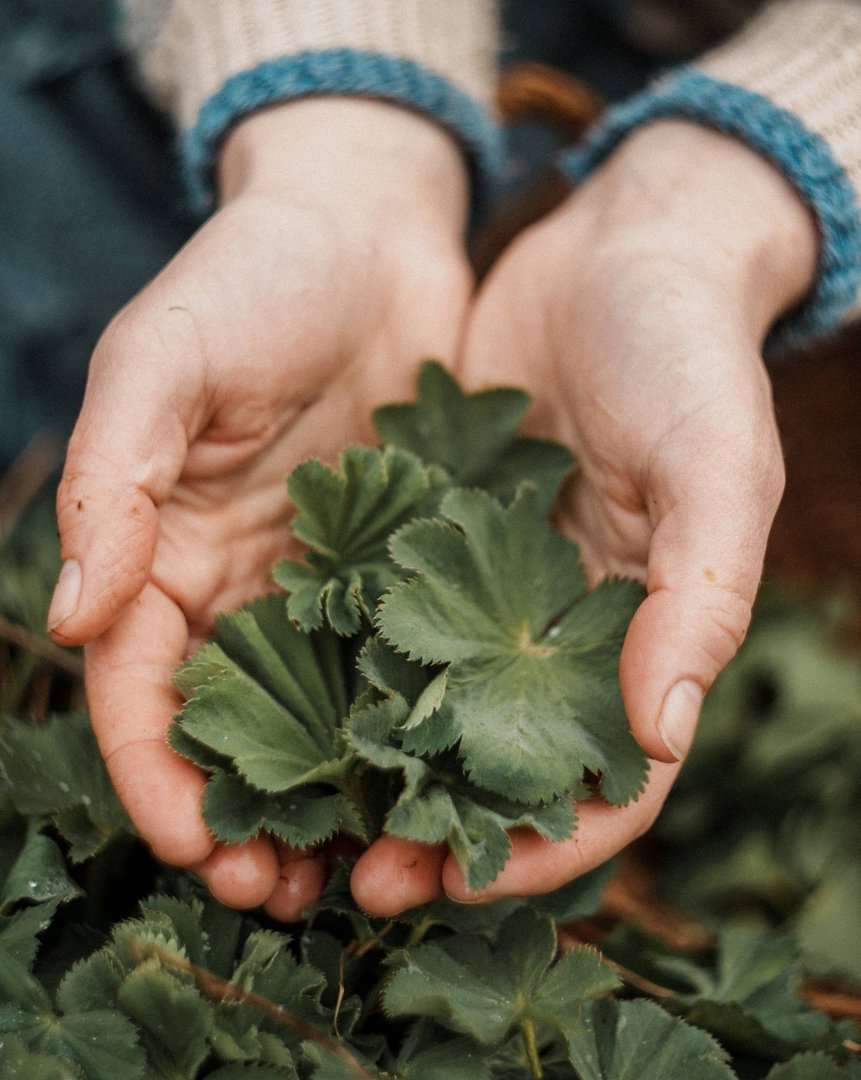
Actions
“The Lady’s Mantle has astringent and styptic properties, on account of the tannin it contains. It is ‘of a very drying and binding character’ as the old herbalists expressed it, and was formerly considered one of the best vulneraries or wound herbs.”
~ Grieve Modern Herbal, 1940
When looking at the predominant actions of Lady’s Mantle, I’d describe its astringency as its most important property. In herbal medicine, astringency is both a taste and an action. Lady’s Mantle’s astringency restores tone to tissues that have become too lax, loose, and flabby.
From a TCM perspective, astringents might be said to restore a “leaky jing gate.” Jing is the core vitality stored in the Kidneys of TCM (which differ from the anatomical kidneys.) In this pattern, you might experience excessive urination. It also would be considered a remedy for “Kidney chi not firm,” whereby we see excessive clear urination and even prolapsed uterus. The astringency tightens and binds these tissues together to give them more tensile strength and hold fluids in.
Aside from lowering fluid output, astringents restore structural tone to tissues. This makes Lady’s Mantle applicable for organ prolapses and hernias where the connective tissue is weakened and overextended.
Like many astringents, Lady’s Mantle is vulnerary because of its tannin and salicylate content. The tannins help a wound close quickly, while the salicylates modulate inflammation for better healing. One of the signatures for Lady’s Mantle’s inflammatory modulating property is its leaves. If you look closely, you’ll notice that its serrated leaf margin comes to a sharp point, which often has a pink-red coloration to it. I view this as a signature for aggravation and irritation in the tissues. Matthew Wood says that Lady’s Mantle is indicated for torn tissues and perforations, such as a perforated eardrum, tears in connective tissue, and a leaky gut. Lady’s Mantles’s vulnerary property seals these internal wounds and encourages healing.
Salicylates are blood thinning, which explains Lady’s Mantle’s special influence on venous circulation. By tonifying the veins with its tannins and thinning stagnant blood with its salicylates, Lady’s Mantle improves circulation. This dual action also makes it appropriate to use for ulceration in the stomach and intestines, although this can be quite serious and requires further medical care.
These are all essentially ways of showing how the astringency of Lady’s Mantle influences the various areas of the body it has an affinity for.
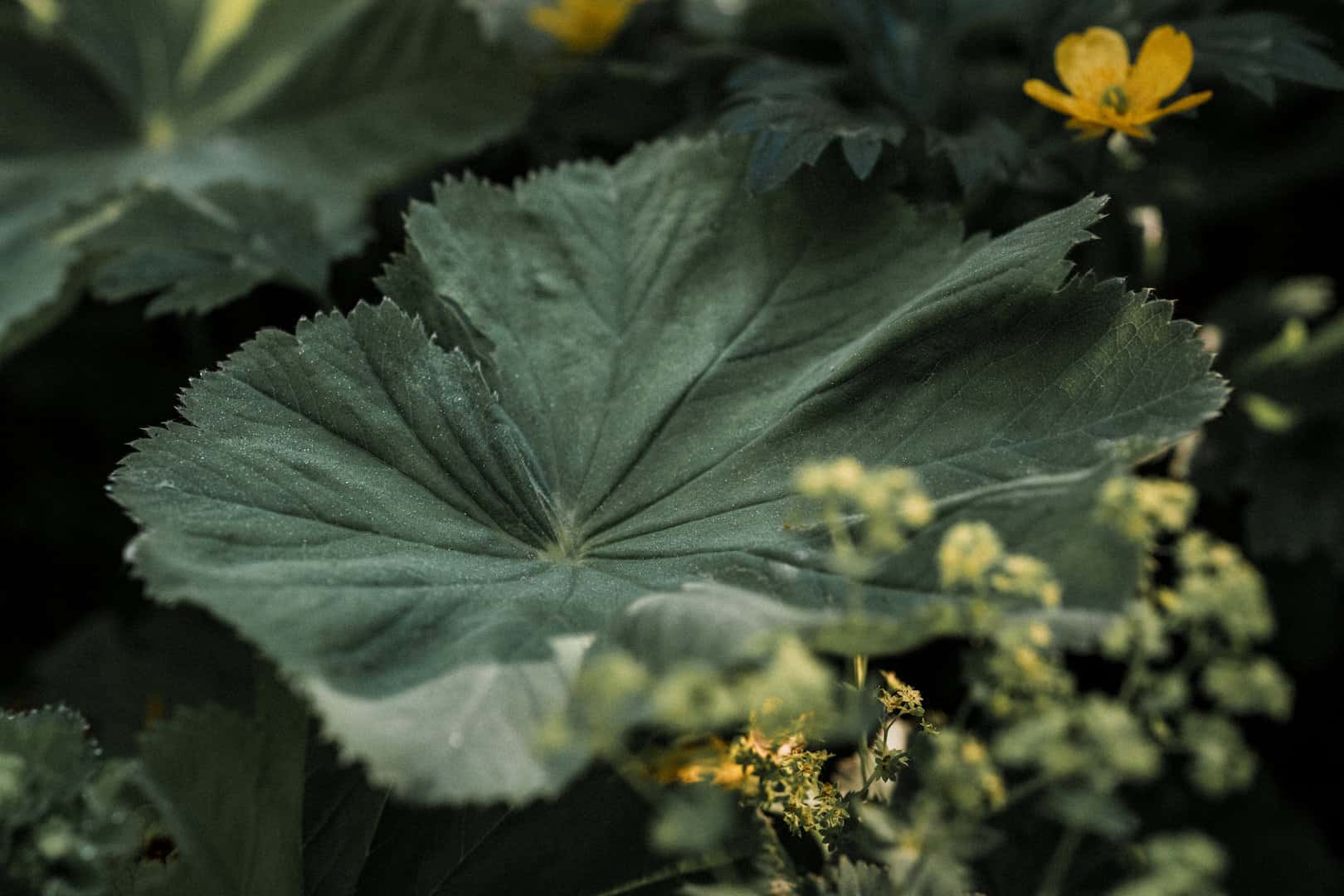
Energetics
Like many Rosaceae plants, Lady’s Mantle is energetically cooling to irritated and hot tissues. As an astringent, it tightens loose tissues and prolapsed organs. Because it’s so astringent and lowers the secretion of fluids, it’s also drying. If you’ve ever had a strong cup of Green tea or eaten a banana that was a little too unripe, that puckering and drying sensation in your mouth is a perfect example of how astringents are drying onto the tissues.
It’s difficult to talk about tannins and astringents without discussing the relaxed tissue state. Lady’s Mantle is a top-tier remedy for the damp/relaxation tissue state, which occurs when a tissue is too lax and there’s an excessive outflow of fluids, such as urination, sweating, and discharge, like nocturnal emissions or leukorrhea. Here I primarily think of Lady’s Mantle for the lower pelvic region and parts of the body (kidneys, bladder, uterus, leg veins etc.), as well as the stomach and intestines.
Lady’s Mantle is also indicated for damp/stagnation, which occurs when metabolic waste products and fluids leak into the wrong parts of the body. For example, a varicose vein occurs when the veins become too lax (damp/relaxation) and blood starts to pool where it shouldn’t (damp/stagnation). Edema is another example that shows how the two tissue states contrast and intersect. First, you’ve got overly lax tissues leaking fluids into extracellular spaces. Over time, these fluids accumulate and stagnate, leading to damp/stagnation. This is a case where I only really consider it for damp/stagnation occurring because of relaxation.
Ayurvedically speaking, Lady’s Mantle aggravates vata dosha because it’s cooling, drying, and tonifying–and vata’s already cold, dry, and tense. However, because it’s so cooling, Lady’s Mantle balances pitta, who is often damp and hot. Lady’s Mantle works best for kapha dosha. This constitution is prone to relaxed tissue states, prolapse, and dampness. Lady’s Mantle restrains those fluids from overflowing, dries up dampness, and tightens and binds overly lax tissues to restore their functionality.
Psychological and Emotional Aspects
A distinctive feature of Lady’s Mantle is its unique cup-shaped leaves that serve as vessels for water and dew. This characteristic is deeply symbolic of its connection to the womb, encompassing physical, emotional, and psycho-spiritual aspects. Just as the leaves hold water, Lady’s Mantle offers its nurturing properties to support the womb.
One notable attribute of this herb is its ability to address issues of stagnation and excessive fluid leakage within the body. Lady’s Mantle’s water storage in the leaves symbolizes its harmonizing effects on fluid-related imbalances. On a psychospiritual level, it plays a role in releasing stored emotions and trauma within the womb.
Herbalists often refer to Lady’s Mantle as a protectant, akin to a mantle of protection, particularly for sensitive individuals. The herb serves as a comforting and supportive presence, providing a shield against external stressors and nurturing the well-being of those who embrace its healing essence.
We (myself and Whitney) have used it quite often for people that have experienced trauma involving the reproductive system, most notably victims of sexual abuse. These are typically very complicated situations, and with complimentary support (such as therapy, counseling, group support etc.) herbs can be very helpful. What we found was that Lady’s Mantle helped to bring a sensation of wholeness to the womb, supported in resolving feelings of guilt or shame, and brought a sense of protection. I want to be clear though that it’s really important for people to get a broad spectrum of support for these types of situations and herbs are a part of a much broader treatment plan.
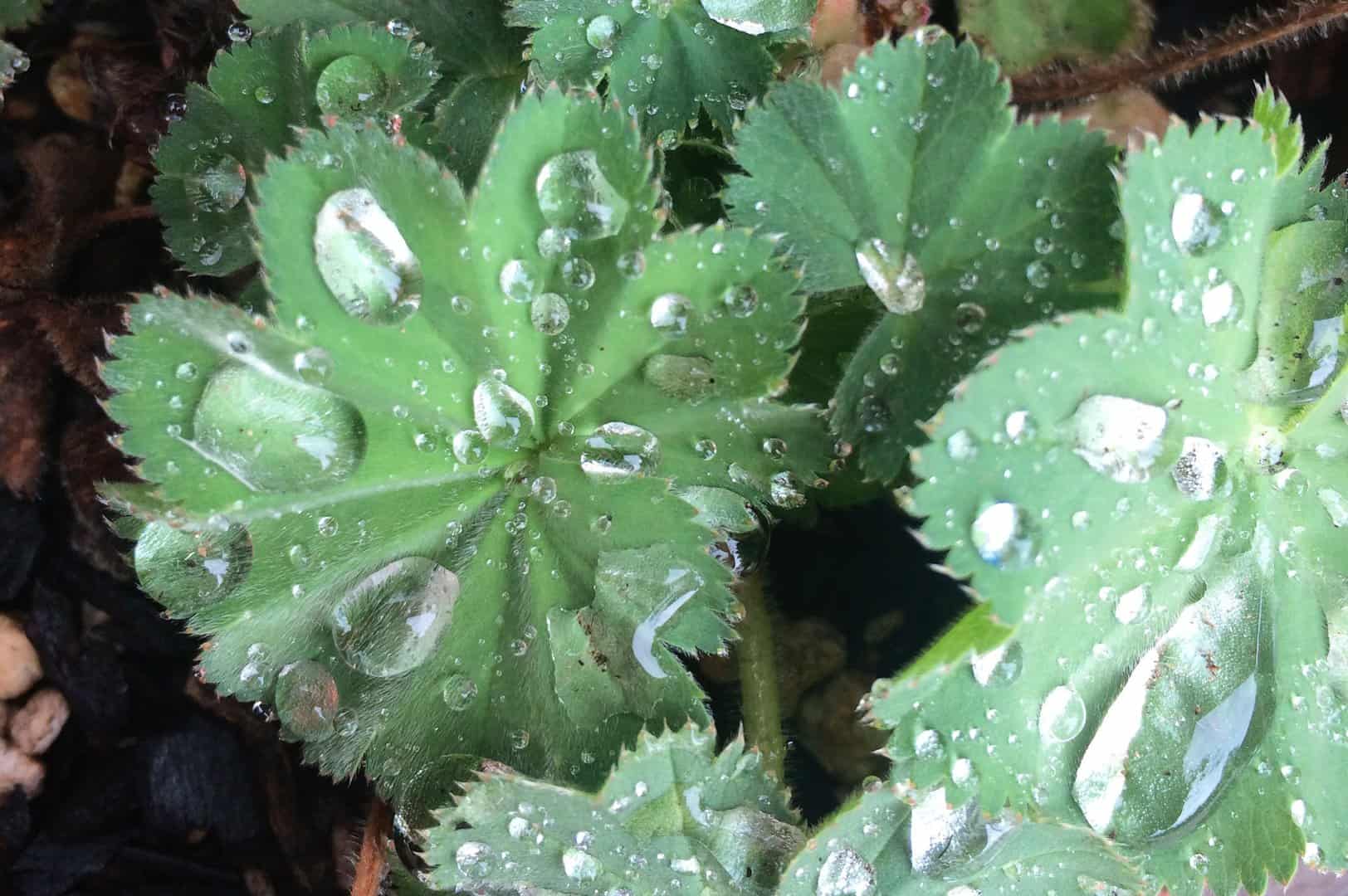
Alchemical Correspondences
Lady’s Mantle, like many plants in the Rosaceae family, is under the governance of Venus, the planet known as the great relaxant. Herbs associated with Venus can exhibit either sympathetic or antipathetic actions. Some Venus-ruled plants relax tense tissues and have antispasmodic properties, while others restore tone to overly relaxed tissues. Lady’s Mantle, being a Venus-ruled plant, specifically addresses Venus imbalances, particularly the damp/relaxation tissue state.
Venus’s influence extends to the organ systems governed by this planet, which include the female reproductive system, kidneys, and urinary tract. Lady’s Mantle effectively restores functional tone and balance to these areas, providing them with support.
Additionally, Venus governs the venous side of circulation. It plays a crucial role in toning the veins, preventing issues like blood pooling and varicose veins. This aspect of Venus’s influence can be observed throughout many of Lady’s Mantle’s actions, affinities, and energetic qualities. In terms of morphology, Lady’s Mantle exhibits a soft and gentle texture, providing a pleasant sensory experience when touched. Its soft leaves correspond to the qualities associated with Venus.
The Elements represent powerful natural forces, and Lady’s Mantle, as you might have guessed from its affinity for water and dew, harmonizes with the Water Element within our bodies. It primarily works with the organs associated with this element, balancing states of excess dampness and stagnation.
When we speak of affinity, it’s often in terms of specific organs. However, we can also consider broader areas of the body. Some herbs have a pectoral affinity, while others work more deeply or superficially, and some focus on circulation in the legs or head. Lady’s Mantle, in particular, has a notable affinity for the pelvic region. It thrives in supporting the kidneys, which govern the Water Element, as well as the uterus and the lower regions of circulation, particularly the veins. Thus, it effectively targets the vital organs and specific areas associated with the Water Element.
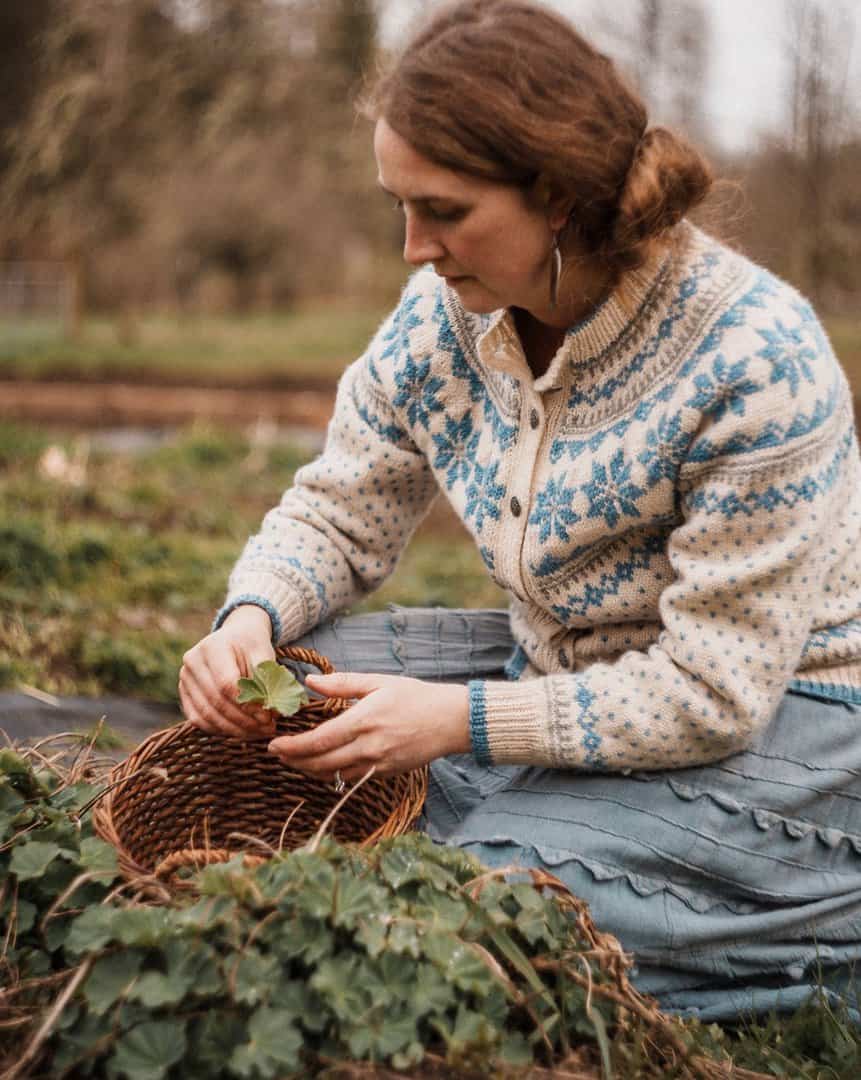
Growing Lady’s Mantle
Growing Lady’s Mantle is easy, especially in temperate northwest climates like the Pacific Northwest, where I reside. Native to Europe, this herb thrives in similar climatic conditions. The plant currently growing in our garden is from a clump that Whitney dug up nearly 15 years ago from her first teacher’s garden. Lady’s Mantle is incredibly adaptable, growing both in full sun and shaded areas.
While I haven’t had much luck growing Lady’s Mantle from seed, it’s worth mentioning that the germination process relies on light. Seeds have a short lifespan, so it’s important to use fresh ones and ensure they have exposure to light for successful germination. If you want to propagate Lady’s Mantle, it may be easier to dig up a small chunk from nature and plant it in your garden.
Interestingly, during a visit to Norway, we had the pleasure of witnessing Lady’s Mantle in its natural habitat. It thrived near streams, in shady and moist areas, and even in the harsh, cold, windy mountainous landscapes, where it grew alongside wild blueberries. This herb’s hardiness amazed me, and it was a special experience to connect with the plant in its diverse environments. It was a profound experience to connect with a plant that grows in my ancestral homeland and to be able to use it today in our current home in the Northwest.
When it comes to harvesting Lady’s Mantle, some people prefer to gather it before it blooms. However, even when the plant has reached the flowering stage, it retains its desirable astringency and tannin content. In fact, I find this to be an ideal time for harvest, as the presence of the flowers adds an energetic and spiritual quality to the medicine. While some herbs, like Nettle leaf (Urtica dioica) or Horsetail (Equisetum arvense), are typically harvested before flowering, Lady’s Mantle doesn’t show a significant difference in potency whether harvested before or during flowering.
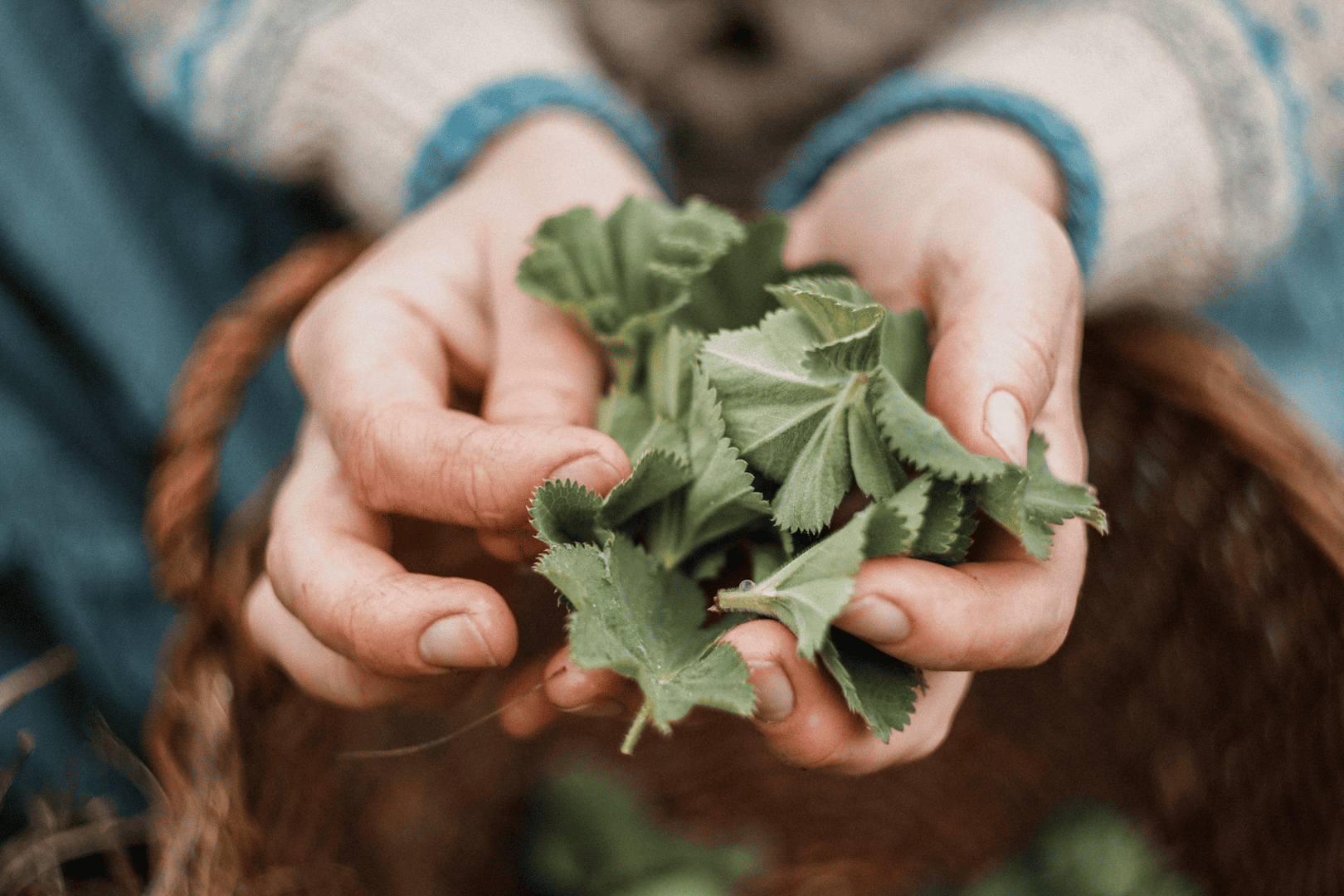
Preparation
Having worked with this herb for an extended period, I’ve found that fresh preparations yield the best results. Due to its tannin richness, a lower concentration of alcohol is sufficient for dried preparations, around 30% alcohol. However, when working with fresh Lady’s Mantle, I recommend increasing the alcohol percentage to approximately 50%, adjusting as needed based on the moisture content of the plant. While Lady’s Mantle can be prepared as a tea, its high tannin content can cause stomach upset for some folks. For that reason, I prefer to take the herb in tincture form.
Lady’s Mantle holds a special place in my heart, as it resonates deeply with my practice of plant-based alchemy. Its name, Alchemilla, meaning “Little Alchemist,” showcases the reverence this plant received from ancient alchemists. Alchemilla was highly regarded in alchemical practices, particularly due to its association with dew. Dew, considered magical in alchemy, possesses a unique quality as it collects on the Earth’s surface.
The water found within Lady’s Mantle is not simply from rain but rather the natural moisture that gathers in its cup-shaped leaves. According to alchemical beliefs, there exists a central fire deep within the Earth, radiating heat outward. When this heat meets the cool air, it creates a perfect environment for the condensation and collection of dew. This dew is said to capture the essence of celestial fire, making it a remarkable and revered form of water in alchemical works.
Early in the morning, alchemists would stake out four posts in a field and attach a sheet, just slightly above the ground. They would wring out the collected dew from the sheet, gathering this precious liquid. Such dew was utilized in specific alchemical processes where special waters played a crucial role.
What captivates me about alchemy is its attention to detail in every step of the medicine-making process. It goes beyond simply obtaining water from a tap or pouring alcohol over a plant. Alchemy delves into the nature of the water used, the origins of the alcohol, the specific plant it comes from, and even the timing of its distillation. This level of thoughtfulness and exploration is what makes alchemy so extraordinary and adds to my admiration for this ancient art.
Lady’s Mantle carries a profound connection to the world of alchemy. Its role in dew collection and the esteemed place it held among alchemists accentuates its mystical qualities. This plant invites us to embrace a deeper understanding of the nature of water and the significance of every detail in the medicine-making process. Lady’s Mantle stands as a testament to the enchanting world of alchemy and its appreciation for the intricate interplay between plants, elements, and consciousness.

Female Reproductive Tonic Triplet
33.3% Nettle (Urtica dioica)
33.3% Red Raspberry (Rubus idaeus)
33.3% Lady’s Mantle (Alchemilla vulgaris)
This triplet combines three tonic-astringent herbs with an affinity for the womb and female reproductive system as a whole. This is a great formula for the relaxation tissue state, as it not only tightens and tonifies lax and weak tissues but provides nutrition to them as well.


